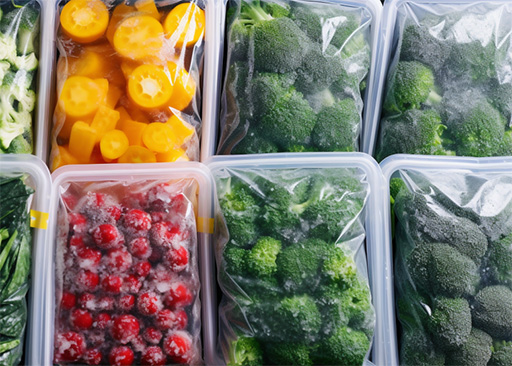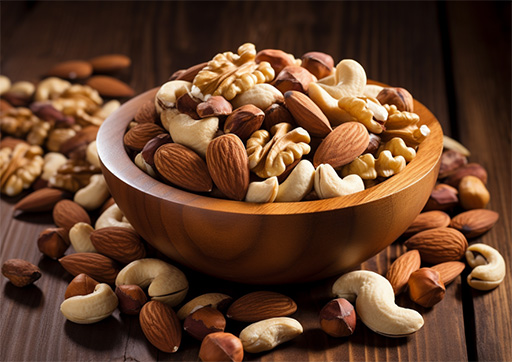What Is Considered Processed Food? [And What To Avoid]
 While nutritionists and health experts often advise people to reduce their processed food intake, changing your diet for the better isn’t necessarily easy. What is considered processed food? What makes processed food different from healthy food?
While nutritionists and health experts often advise people to reduce their processed food intake, changing your diet for the better isn’t necessarily easy. What is considered processed food? What makes processed food different from healthy food?
The term “processed food” is vague, and many people may not know which foods to avoid. By asking and answering these questions, you’ll be able to provide your patients with valuable advice that will help them improve their health for the better.
What Does Processed Food Mean?
Technically speaking, it is any food changed from its natural state. If you wash or cook your food before eating it, that food is processed. With that said, people usually use the term to refer to food that’s gone through a lot of processing.
Ultra-processed foods usually have added ingredients that you won’t find in the average kitchen, such as hydrogenated oils, bulking agents, artificial sweeteners, and corn syrup. As a rule of thumb, if a food product has a long list of ingredients, it would be highly processed.
Why Is Food Processed?
Food goes through processing for all kinds of reasons. In some cases, it’s necessary to make the food edible. Processing can also improve food flavor and keep it fresh for longer.
In some cases, foods are fortified with valuable nutrients, like vitamin D. Nutrients are also added to enriched foods. Nutrients can be lost during processing but adding those nutrients back in is possible.
In addition to these reasons, processing food is for the sake of convenience. Some types, like frozen dinners, only take minutes to prepare, making them a stress-free and straightforward choice for someone that doesn’t have the time to cook.
Is Processed Food Harmful?
It can be unhealthy, but that doesn’t mean that any heavily processed food is harmful. Some minimally processed foods, such as milk and breakfast cereals, may be fortified with vitamins and minerals that make them more nutritious. Instead of ruling these out entirely, it’s best to assess foods to determine whether they’re unhealthy.
The most harmful foods have hidden sugars and sodium. While the body requires some sodium to function, high sodium consumption can put you at increased risk for heart problems. Overeating salt sugar can increase the risk for diabetes, fatty liver issues, and other harmful conditions.
With that said, no one must altogether avoid processed foods. Instead, consume these foods in moderation. The bulk of any diet should consist of healthy whole foods that have gone through minimal processing.
When asking, “what is considered processed food” you should think about why you’re asking that question in the first place. It isn’t always bad, but ingredients found in many these foods could potentially harm the health of your patients.
What If You Mostly Eat Processed Foods?
Eating too many ultra processed foods can cause all kinds of issues. Not only can certain ingredients put you at risk for dangerous health problems, but they can also lead to digestive problems and excessive tiredness. Foods that are high in simple carbohydrates could cause sleep problems.
Other issues linked to ultra processed food include overeating and insulin resistance, which can be especially dangerous. Some studies have even found that people that have diets high in processed foods are at increased risk of diabetes.
Even the minor risks associated with these foods can cause serious harm, so you should encourage your patients to try a healthier and more nourishing diet. Talk to your patients about what they consume and let them know how their diet could impact their health.
What Kinds of Foods Are Healthy?
You’ll also want to think about minimally processed foods. Simply avoiding bad foods won’t improve anyone’s nutrition. If you’re going to eat healthily, you’ll want to replace those harmful foods with helpful ones.
The best foods have gone through little-to-no processing, such as fruits and vegetables, eggs, beans, and lean proteins. Some examples include:
* Fresh and frozen produce
* Legumes like lentils and beans
* Whole grains, such as oats and brown rice
* Fish
* Lean meats
* Nuts and seeds
* Recipes with herbs
Eating whole foods usually requires cooking from scratch, which can be difficult for anyone with a busy schedule. Thankfully, you don’t have to completely give up on the convenience of processed foods.

What Processed Foods Are Safe?
Not all foods are the same, and plenty can still be part of a healthy diet. It’s best to think of foods as if they were on a scale. Some foods, like pre-cut vegetables, don’t have any added ingredients that could cause you harm. Even foods that feature ingredients added for flavor, texture, or as a preservative can still be healthy.
Pre-made meals are typically heavily processed, but some of these products have much healthier ingredients than others. When you check a product’s label, watch out for ingredients like hydrogenated oils, sodium nitrates, and artificial flavors and sweeteners.
Sugar is one of the most harmful ingredients in foods, but you should be aware that added sugars are in many different forms. High fructose corn syrup, maltodextrin, dextrose sucrose, and cane juice crystals are all types of sugar.
Watching out for these kinds of ingredients can help you find healthier products, but you should also focus on your diet rather than worrying about individual foods. Eating one frozen pizza a week at home isn’t a big deal if you’re also eating plenty of fresh meals made from whole foods.
Some of the better-foods include canned fruits and vegetables and whole grains. Frozen produce can also be an excellent option. Some packaged snacks can also play a valuable role in your diet.
Other Potentially Beneficial Foods
* Breakfast cereals
* Yogurt
* Healthy spreads, like jams and nut butter
You don’t have to rule out processed foods wholesale. If you know what to look for — and what to watch out for — you can be ready to enjoy the positive qualities of foods while avoiding downsides.
Is Meat Processed?
Any meat product that isn’t fresh is processed. There are all kinds of processed meats, including lunch meat, bacon, sausages, and corn beef. While poultry is generally a healthier option than red meat.
Encourage your patients to eat fresh meat whenever possible. When your patients have meat, you should encourage them to choose poultry rather than red meat.
How To Eat Less?
Whether you’re trying to cut back on your intake or advise a patient who wants to improve their diet, you should keep in mind that healthy eating doesn’t necessarily require you to make dramatic changes. The perfect diet advice is usually simple and sustainable.
When someone is trying to cut back, it’s wise to think about why people turn to these foods in the first place. These foods are generally easy and require minimal preparation, making them an ideal option when pressed for time.

If you don’t have a lot of time to cook during the week, you can try meal prepping recipes n a day when you do have the time. If you prepare in big batches, you can freeze these freshly cooked meals and have them throughout the week.
Lastly, work to cut out foods that aren’t adding anything valuable to your diet. If you’re drinking sugary beverages throughout the day, you’re taking in sugar, and low-fat foods are typically low in calories without getting anything valuable in return. Although plain water is the healthiest thing to drink, flavored water can also be a good option if it doesn’t contain too many harmful ingredients.
If you have a patient struggling to cut back on their intake, you may want to ask them to complete a food frequency questionnaire. If you can see what your patient is eating throughout the week, you may get a better sense of why and when they’re eating.
How BioScan Can Help
Thanks to BioScan, it’s possible to quickly assess your patients’ diets and nutritional needs without putting them through invasive testing. This real-time testing and analysis system can provide valuable information about sensitivities and common nutritional deficiencies.
It is a fast and highly effective way to learn more about a patient’s primary body systems. When you know more about the health status of your patients, you’ll be able to offer them immediate advice. If a patient’s diet is putting them at risk for heart problems, diabetes, or another dangerous health condition, you’ll be able to identify that risk, which means you’ll be able to take steps to address it.
With lab testing, it can take a long time to get results, which means you may not be able to offer your patients advice and guidance in the office. BioScan gives you access to immediate information, and you can use that information to guide your patients towards better health.
So, What Is Considered Processed Food?
While any food altered in some way could be described as processed, only heavily processed foods are likely to harm the health of your patients. If your patients have too many in their diet, you’ll want to identify the issue and help your patient find practical solutions that will keep them in good health.
BioScan offers real-time testing and analysis for everyday stressors. Not only that, but it also aids in nutrition by determining whether the product is in balance with the body.
It allows medical practitioners to analyze patients’ health status and provide necessary protocols to prevent future problems. BioScan also helps reduce the risk of human error while avoiding unnecessary costs for patients. In minutes, you can quickly assess the situation and provide the right plan for your patients.
